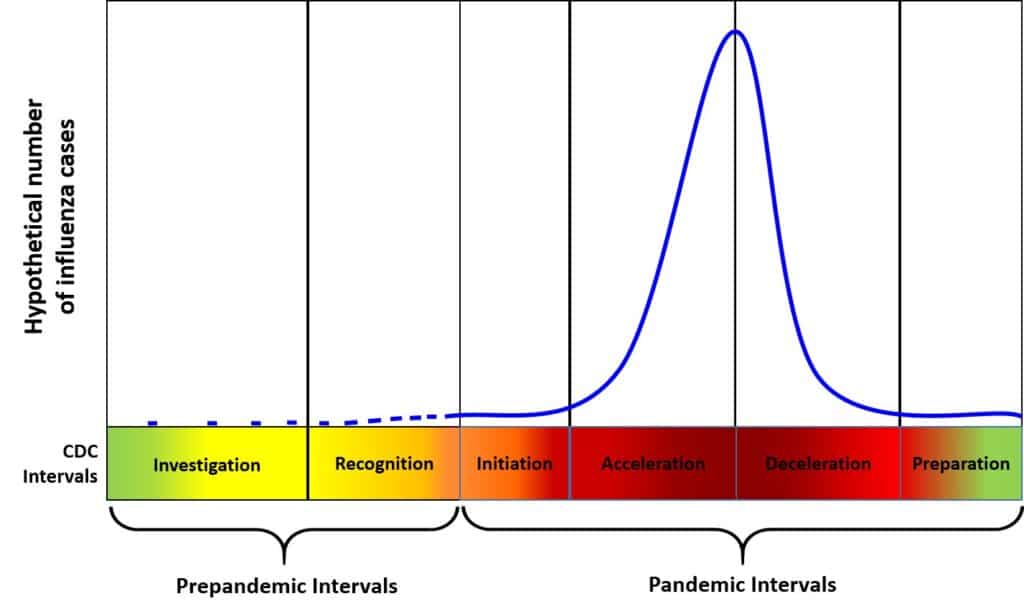
A Recommended Pandemic Planning Approach for Business
By Jeremy Wherren, CSP, CHMM, CMQ/OE, Corporate Health and Safety Officer
The amount of COVID-19 information and guidance for your business to follow and monitor can be overwhelming. Especially if your business operates in multiple geographic regions by which there are distinctly different guidance or requirements for your operations to adhere to. If your business has not developed a pandemic preparedness plan in some form, it should. The plan provides your business a framework which can help be prepared during times of confusion.
The next two posts outline a planning framework which could help your business maintain a roadmap to better manage changing requirements affecting your operations to prevent COVID-19 spread (or any future pandemic) to your employees and customers/visitors.
While this framework does not constitute all the elements of a formal written pandemic preparedness plan (e.g. communications planning, incident management, roles and responsibilities etc.) This framework provides a backbone for your business’s formal written plans to manage pandemic preparedness and response.
This will be presented in a stepped approach which also includes an example document to use as a guide for your business planning. The primary steps of this process include the following:
1. Identify Essential Operations from Non-Essential Operations
2. Conduct a Risk Assessment
3. Establish Applicable Control Measures
4. Develop a Staged Approach for Control Measure Implementation
This post will present steps one through three. Step four along with an example, which will include an example document to use as a guide for your pandemic planning, will be presented in a follow-up post.
To best understand how this planning framework is designed, it is important to understand the U.S. Center for Disease Control (CDC) Pandemic Interval Framework.
Introduction to the Pandemic Interval Framework
The World Health Organization (WHO) also uses a pandemic influenza phase framework, which can be used to describe and communicate worldwide disease progression and can provide a general view of the emerging situation around the world.
In the United States, the CDC created the Pandemic Intervals Network designed to align with the WHO framework. For the purposes of planning for potential pandemics, the six intervals (Investigation, Recognition, Initiation, Acceleration, Deceleration, and Preparation) represent events that occur along a hypothetical pandemic curve. These intervals are shown in Figure 1.
Figure 1: Hypothetical Pandemic Curve

Graphic Source: https://www.cdc.gov/flu/pandemic-resources/national-strategy/intervals-framework.html
As we have seen with COVID-19, pandemic curve shape (correlative to impact) can differ depending on the geographic area in which they occur, population demographics, population density, climate, social preventative tactics utilized preemptively ahead of community spread in a given area, and many other factors.
The CDC intervals are flexible enough to accommodate pandemic progression to allow for local, state, and federal actions appropriate to region specific conditions (e.g. a state or locality with cases versus a state or locality with no cases but that is close to an area with cases). These intervals, in combination with monitoring state and local guidance, can be aligned with how and when a business should ramp up or ramp down its preparedness contingencies. Below is a stepped approach to develop and establish a planning framework to achieve this goal.
Step 1 – Identify Essential Operations from Nonessential Operations
Even if a governmental order deems your business essential or nonessential, chances are internally there is a hierarchy of operational need to sustain your business. It is important to assess your operations into essential and nonessential buckets for pandemic planning purposes. This will allow the business to prioritize its operational needs and establish applicable measures to help keep essential operations sustained for as long as possible. During this operational review, existing work and emergency procedures to maintain critical operations should also be evaluated and ensure competent staff depth with knowledge to operate essential operations is adequate.
Step 2 – Conduct a Risk Assessment
It is important for each employer to conduct a risk assessment of its employees to understand the hazards and exposure potential. To assist employers, the U.S. Occupational Health and Safety Administration published Guidance on Preparing Workplaces for COVID-19 to help employers prepare the workplace. On May 10, 2020, WHO published risk-based guidance closely aligned with OSHA which may be helpful to businesses. The level of risk depends on a variety of factors including industry type and the need for contact within 6 feet of potentially infected persons. To help employers determine appropriate precautions, OSHA divided job tasks into four risk exposure levels: very high, high, medium, and lower risk whereas WHO does not include a very high level.
Once the risks are ascertained for employees in the types of operations identified and grouped in Step 1 above, applicable control measures can be established for each risk level identified. OSHA believes that most businesses will fall within low and medium level exposures.
Step 3 – Establish Applicable Control Measures
Once the risks to your business are established, applicable control measures need to be applied to mitigate the risks. There is a plethora of informational sources available to establish control measures from. Below are some recommended publicly available sources.
1. Review your state and local reopening requirements. Align your measures with those plans. The National Governors Association website is a great resource to see a high level of all state reopening strategies.
2. OSHA: COVID-19 Control and Prevention Website
3. WHO: Considerations for Public Health and Social Measures in the Workplace in the Context of COVID-19
4. American Industrial Hygiene Association: COVID-19 Resource Page with Multi Sector Guidance Documents
5. CDC: COVID-19 Planning and Prep Guidance for COVID-19
Step 4 – Create a Staged Approach for Control Measure Implementation
With Steps 1-3 completed, there now should be a hierarchy of control measures applied to identified essential and nonessential operations with applicable control measures assigned. This information can be organized in a staged framework in alignment with the intervals of the pandemic. Step four along with an example, which will include an example document to use as a guide for your pandemic planning, will be presented in a follow-up post soon.
Should your business (small to large) need assistance with pandemic planning, COVID-19 safety procedures, risk assessments, or related EHS compliance support, Nobis Group is here to help. Please reach out to me anytime at jwherren@nobis-group.com should you have any questions or needs.